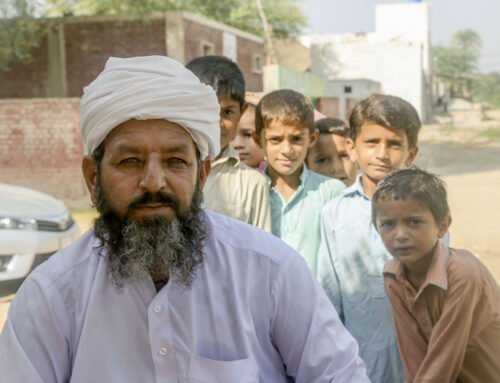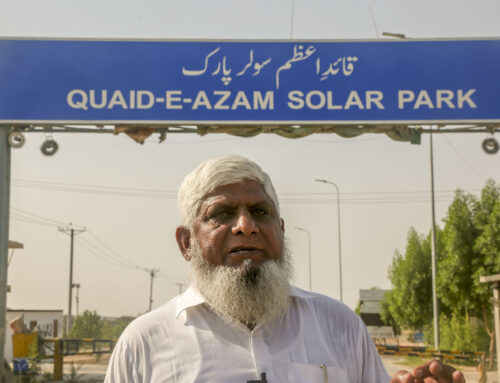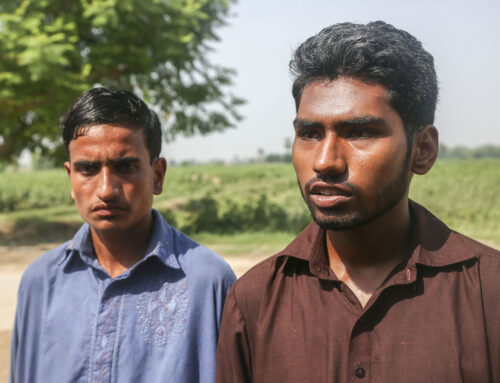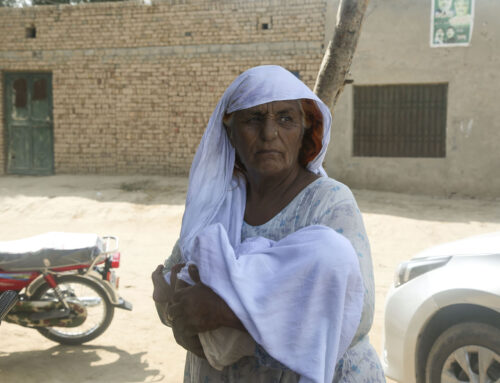“…Pakistani people are beneficiaries of solar energy. It has improved the socio-economic conditions of the common people and has enhanced their income and made their lives more comfortable. Solar energy has been a catalyst in poverty eradication. People are happy and grateful to Chinese brothers and sisters and welcome more similar development projects to improve their lives.
A Solar Energy Opportunity for Growth and Friendship
by Prof. Engr. Zamir Ahmed Awan, Sinologist (ex-Diplomat), Editor, Analyst, Non-Resident Fellow of CCG (Center for China and Globalization), National University of Sciences and Technology (NUST), Islamabad, Pakistan.
Photographer: Aun Ali Jafri
Pakistan, with a population of 220 million, which is set to grow at a rate of 1.5% annually, sees the demand for energy to be continuously, and drastically, growing. However, energy deficiency has been a serious challenge to the security and economy of the country. Currently, almost 80% of Pakistan’s energy supply comes from the burning of fossil fuels, such as oil and gas that Pakistan has to import.
At the same time, Pakistan is blessed with natural resources like solar, and wind, etc. According to recent studies, Pakistan’s solar potential is estimated to be over 100,000 MW and solar irradiation across the country is around 4.5-7.0 kWh/m²/day. The south-western province of Balochistan offers excellent conditions for harnessing solar energy. There, the sun shines between 8 and 8.5 hours daily or approximately 3,000 hours per annum. For many Pakistani villagers who live far from the national grid, distributed solar power provides an ideal solution.
Facing global climate urgency, Pakistan has been promoting more environmentally friendly renewable energy in recent years. The government intends to boost the share of clean and green energy to 60-65% of the total energy mix by 2030. Some key initiatives have been taken, such as the Solar Village Electrification programme, under which more than 40,000 villages that are too far from the national grid to be economically connected now have energy access, and the Solar Powered Efficient Pumps programme that is designed to replace 1.1 million water pumps that were previously operated with either insufficient electricity or diesel. The Quaid-e-Azam Solar Power in Punjab is the first-ever utility-scale solar power plant in the country.
To promote solar energy, the Pakistan government has also offered a flexible and attractive policy that includes tax incentives and legal protection for return on investment. The return on investment is usually eight years, which is the highest in the world. Under the China –Pakistan Economic Corridor (CPEC), further incentives are offered for Chinese investors, along with other preferential treatment.
As the interviews in the book have shown, Pakistani people are beneficiaries of solar energy. It has improved the socio-economic conditions of the common people and has enhanced their income and made their lives more comfortable. Solar energy has been a catalyst in poverty eradication. People are happy and grateful to Chinese brothers and sisters and welcome more similar development projects to improve their lives. These projects are cost-effective, and, contrary to the pictures portrayed by western propaganda, they are not debt traps.
China is a world leader in solar energy and has been meeting the worldwide demand. Today, China can share their solar technology, experience, and environmental improvement stories with the rest of the World. Pakistani Government’s new policies and determination to develop solar energy provides Chinese solar companies and investors, as well as Pakistani people, a great opportunity to grow together cleanly and sustainably.




